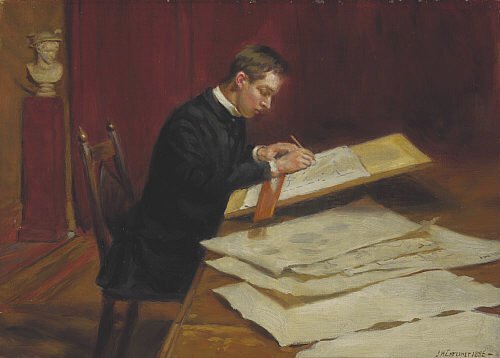
SEMINAR: Sir Robert Lorimer and ‘What a A Scotch Gentleman’s Home Ought to be’
Mon 06 September 2021
18:00 -20:00
Sir Robert Lorimer was one of Scotland’s leading Edwardian architects who is rightly famed for his great public buildings such as The Thistle Chapel and the Scottish National War Memorial.
He is also highly regarded for his beautifully planned and detailed new country houses such as Ardkinglas in Argyll, and the unfinished Formakin in Renfrewshire. A large part of his domestic work was however making alterations and adaptations to existing buildings. His great skill was to make them comfortable homes and also to make them suitable for the lavish Edwardian lifestyles his clients lead.
Lorimer was passionate about different building styles and traditions and sketched wherever he went. He was called on to adapt and extend a wide variety of buildings both north and south of the border. He was able to respond to different locations with sympathy and rigour. His work in England shows him responding to local vernaculars and styles a long way from crowsteps and harl.
Using the extensive Lorimer Collection held at the National Record of the Historic Environment at Historic Environment Scotland in Edinburgh Simon will celebrate both the diversity and consistency of this important part of his work. The paper will examine the different ways he approached these commissions; how he responded to the different styles and ages of buildings; how he dealt with his clients and how he worked with his trusted craftsmen to produce homes that are both individual and distinctively ‘Lorimerian.’

General Info
Organiser